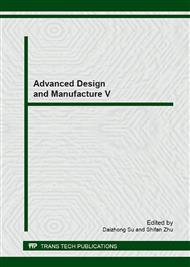p.74
p.78
p.84
p.90
p.103
p.107
p.111
p.115
p.119
Information Flows and Design Intent in the Core of Future Product-Services in the Field of Manufacturing Industry
Abstract:
Knowledge builds on data and/or information that is organized and processed to convey understanding, experience, accumulated learning and expertise. At the moment, the volumes of data and information are quickly growing uncontrollably. The sheer amount of data, that lacks the structure, connectivity and intent, cannot be utilized efficiently later on. There is ever the greater need to transfer this unstructured mass of bits and bytes to meaningful information and to human understandable knowledge, as it is understood in the industry. However, there are major challenges in understanding the essence of information flow that should connect the different design departments and activities to be part of the life-time information of a product, including its processes and services. The paper introduces a vision where the semantically rich product-process information flows through the life-cycle phases – design, manufacturing, services – of a product or a system, and thus increases the content knowledge.
Info:
Periodical:
Pages:
103-106
Citation:
Online since:
September 2013
Authors:
Price:
Сopyright:
© 2014 Trans Tech Publications Ltd. All Rights Reserved
Share:
Citation:


